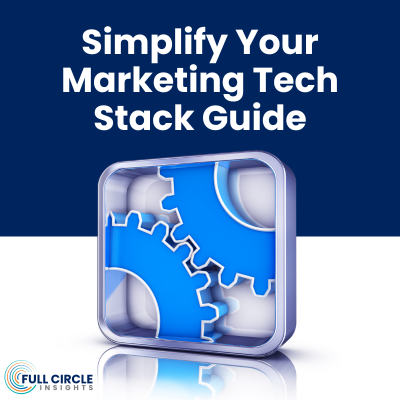When it comes to marketing insights, your CEO is primarily interested in one thing: attribution.
In other words: which marketing efforts are driving the most revenue, and what is the return on investment of the marketing spend?
The best way for your marketing department to provide this kind of data to the CEO is to track marketing campaigns in your company’s CRM system, such as Salesforce. When both your sales and marketing teams measure their efforts in Salesforce, your CEO is equipped with one source of truth for all revenue development channels.
Proving ROI is essential to making the case that your marketing is effective and equips your CEO with the data to defend your marketing spend. So, which CRM marketing insights does your CEO want to see?
5 Marketing Insights Your CEO Cares About
Want to prove your marketing team’s value to your CEO? Gather these marketing insights from your CRM to prove the return on investment your department creates for the company:
- Revenue sourced by department
- Funnel velocity
- Funnel volume
- Total attribution influenced by department
- Marketing-to-sales handoff and funnel conversion rates
#1: Revenue Sourced by Department
What is it?
Revenue Sourced by Department measures the impact different teams, such as marketing, customer success, and sales, have on sales.
Why it matters:
Your CEO wants to know how much marketing affects the business versus other ways that business is being developed. While the marketing department doesn’t close deals, it does tee up opportunities for the sales team and influences deals through ongoing campaigns throughout the sales cycle. Similarly, the sales department also sources deals through marketing-lead call-down campaigns or special customer engagements.
The Revenue Sourced by Department metric gives your CEO a holistic look at who contributed to deals, beyond the sales team.
#2: Funnel Velocity
What is it?
Funnel Velocity shows how quickly leads pass from stage to stage of the marketing and sales funnel to become customers.
Why it matters:
Velocity is a key Salesforce attribution metric the CEO can use to identify where processes can be streamlined to cut down on sales cycles and generate more revenue from the same resources. Funnel velocity can assist CEOs in asking their sales teams to look through their contacts to identify short-term deals to close.
This marketing insight can also help CEOs identify and clear up bottlenecks in the lead management process. A good CEO knows that if they can shorten the sales cycle by half, they can double their revenue in the same time period. Therefore, examining funnel velocity is a really useful metric.
#3: Funnel Volume
What is it?
The other key funnel metric for a CEO to look at is the current active funnel. Funnel Volume shows the sheer number of leads every department generates and is a great snapshot of the health of your pipeline.
Why it matters:
Generally speaking, the more leads the marketing department can generate at the top of the funnel, the more opportunities the sales team can create—leading to more revenue. Funnel Volume is a great metric to track in conjunction with velocity and conversion rates to put marketing and sales efforts into context.
Beyond that, drilling down into specific market segments, campaign types, and even individual responses can get you answers to even the most detailed questions the CEO may ask.
#4: Total Attribution Influenced by Department
What is it?
Total Attribution Influenced by Department demonstrates how much pipeline or potential revenue the marketing team has sourced compared to other demand generation channels.
Why it matters:
Marketing attribution proves your team’s impact on the entire sales process. It traces leads, conversions, and revenue back to the marketing team’s efforts. Since data-driven CEOs want to understand investments in pipeline development, it’s important for the marketing team to show its role in generating potential revenue for sales.
#5: Marketing-to-Sales Handoff & Funnel Conversion Rates
What is it?
The final marketing insights your CEO cares about are your marketing-to-sales handoff rate and funnel conversion rate. Marketing-to-sales handoff rate refers to the percentage of marketing leads who have traveled down the marketing funnel and are ready to be passed on to the sales team to become sales leads. Funnel conversion rate measures the percentage of leads who become customers, or complete some other conversion goal.
Why it matters:
Leveraging this Salesforce attribution metric to show the volume and conversion rate across the marketing-to-sales handoff provides the CEO with a complete picture of how smoothly the entire demand generation organization is functioning.
Seeing this data not only lets you and your CEO prevent drops in demand generation, but also lets you squeeze more revenue out of your existing budget if you can find bottlenecks in the process.
Marketing Attribution: Aligning Your CEO and Marketing Department
At the end of the day, what your CEO cares about the most is how the company can generate more revenue, more quickly. When you demonstrate to your CEO exactly how much revenue and total pipeline marketing efforts influence, and the relationship between marketing spend and marketing ROI, you can prove the marketing department’s role in helping the company succeed.
Learn more about creating and customizing campaign attribution models in Salesforce
Schedule Full Circle Insights Demo



